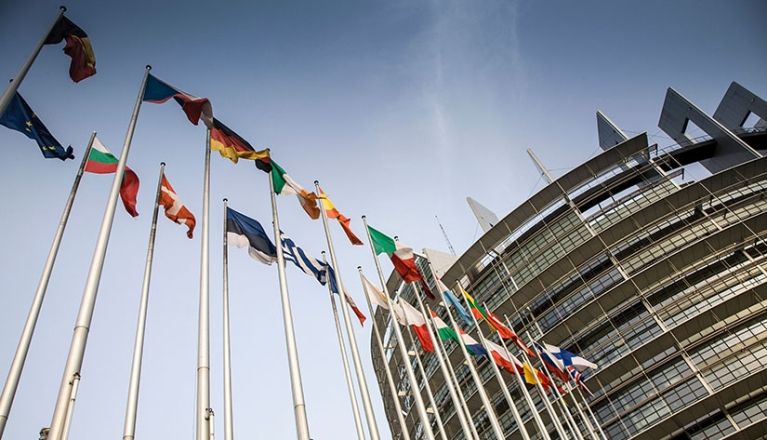European recovery package: opportunities, constraints and risks
With the European Parliament’s vote in the bag, the Next Generation EU (NGEU) recovery package is moving into the phase where national governments must boldly ratify it before the first joint bond issues can take place to finance the package. In the meantime, governments are scrambling to provide final versions of their national recovery plans in April and incorporate them into their multi-year budget plans.

This process is unfolding at a time when the consensus is reuniting behind the European project and EU institutions – though this renewed consensus is neither permanent nor structural. How long it lasts will depend on the results of NGEU, which is leading the European Union to a veritable crossroads. Indeed, NGEU is not just a driver of post-COVID recovery: it’s also an instrument designed to help spread the success of more buoyant economies to those that are lagging behind, a driver of inclusive development aimed at reducing the economic polarisation heightened by the 2008-2011 crisis, which is likely to be further exacerbated by the current crisis, with the risk of fuelling further tension between Member States.
Member States’ high level of commitment to a shared recovery at European Council level is also a strategic response designed to reignite and optimise the EU’s internal engine and drive a European technological upgrade through a project spanning the issues of growth, sustainability, social mobility and democratic consensus. Such a response offers the possibility of finally crystallising the Lisbon Strategy’s promise to transform the EU into the world’s most dynamic knowledge economy. It is also a break with short-term strategies confined to limiting national risks without harnessing shared potential. Lastly, it signifies an awareness of the need for the European experiment to mature in the midst of a world undergoing profound change.
If properly used, NGEU could represent a fundamental milestone in the European project. However, if this first shared initiative is to be a success, and probably the first step towards giving Europe a permanent budgetary capacity geared towards macroeconomic stabilisation, Member States must step up and take ownership like never before.
Opportunities for Member States mean opportunities for the Union
For Member States, NGEU is an opportunity to draw on very substantial resources to structurally reinforce economic systems and set them on more sustainable potential growth trajectories. The package is aimed at making expenditure more financially sustainable by transforming it into growth potential.
Member States are required to operate within the framework of priorities identified by the European Commission – notably including digital innovation, green transition and social cohesion – to initiate and drive through a process of European convergence. This process is based on a combination of investment and reform designed to free economies from structural constraints by embracing a shared understanding of the required adjustments. These priorities are also intended to create interdependencies and synergies between countries and perhaps even real supranational initiatives able to generate positive externalities both for the countries involved and for the EU as a whole.
These initiatives could meet the European Parliament’s demand to create more headroom for spending on European public goods. This headroom has been reduced not only in NGEU but also in the multiannual financial framework adopted by the European Council last July (2021-2027 MFF).
These initiatives could also give rise to irreversible forms of supranational cooperation that could accelerate budgetary coordination in the context of the European semester and even go beyond it to form the skeleton of a shared fiscal policy financed by shared debt.
Constraints in support of strategic construction
The Commission and the Council have placed strict constraints on the spending of NGEU funds, but these should be interpreted in a favourable light: they are aimed at ensuring overall consistency among national strategies and greater efficiency in the supply of European public goods. Indeed, the goal is to ensure that the planned economic arrangements are able to accommodate the structural changes that are taking place within the EU. In fact, it would have been desirable for Member States to have worked together more when drawing up their national plans.
The dual focus on investment and reform should result in a sort of matrix drawn from national recovery plans. On the one hand, national responses can be compared with the Commission and Council’s specific recommendations to countries under the Macroeconomic Imbalance Procedure to free economies from structural constraints. On the other hand, the seven political priorities identified by the EU out to 2027 should be combined. The constraint of a minimum threshold for funding allocated to digital innovation (20%) and green transition (37%) will help ensure that action is aligned with priorities. To prevent resources being spread too thin, the Commission suggests identifying a limited number of major projects characterised by mutually beneficial interaction between reform, public investment and incentives for private investment.
Project and programme deadlines will be strictly monitored. While Member States will be eligible to receive pre-financing of up to 13% when their national recovery plans are approved, further tranches of funding (totalling two a year) will be contingent on interim assessments based on qualitative results and delivery against quantitative targets.
The risks: all for one but also one for all
Member States bear responsibility for building a governance structure that can simultaneously define and deliver individual projects in keeping with forecast timescales, conditions and costs while allowing for joint national and European monitoring. Despite the granularity required to monitor and implement individual projects, this governance must be political and maintain a decision-making and executive role at the same time as allowing ongoing dialogue with the European Commission’s NGEU administration (the President, the three Executive Vice-Presidents and the Commissioner for the Economy).
Not only must this political body be able to marshal significant organisational, institutional and financial resources, it must also harness the energy of the private sector, geographical regions and intermediary bodies. It must therefore mobilise the country system around a shared responsible commitment to the strategic objective of transforming the economy.
This is a huge collective responsibility on which the potential development of countries and the continent as a whole may depend. That means all the forces in play will make a fundamental contribution to determining the success or failure of the European programme. This is both an opportunity to be seized and a historic challenge to be overcome: an opportunity and a challenge that demand real innovation in governance.
Paola Monperrus-Veroni, Group Economic Studies









